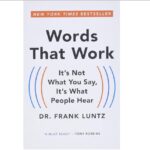“The Highly Sensitive Person” by Dr. Elaine N. Aron explores the trait of high sensitivity, characterized by heightened emotional responsiveness and sensitivity to environmental stimuli. Aron defines the trait, discusses its biological basis, and outlines common characteristics and experiences of highly sensitive individuals. She offers insights into navigating challenges such as sensory overload and emotional overwhelm, as well as strategies for self-care, boundary-setting, and building healthy relationships. Through validation and practical guidance, Aron empowers highly sensitive individuals to embrace their unique traits, cultivate self-understanding, and thrive in a world that may not always appreciate their sensitivity.
Here’s a detailed 10-point summary:
- Defining High Sensitivity:
- Aron introduces the concept of high sensitivity, or sensory processing sensitivity (SPS), as a personality trait characterized by heightened emotional responsiveness and sensitivity to environmental stimuli.
- She explains that approximately 15-20% of the population possesses this trait, which is innate and can be observed from infancy.
- Traits and Characteristics:
- The book outlines the common traits and characteristics associated with high sensitivity, such as depth of processing, emotional intensity, sensitivity to subtleties, and overstimulation in highly stimulating environments.
- Aron discusses how these traits manifest across different domains of life, including social interactions, work, and relationships.
- Biological Basis:
- Aron explores the biological basis of high sensitivity, highlighting the role of the nervous system and genetic factors in predisposing individuals to this trait.
- She discusses the evolutionary significance of high sensitivity and its adaptive functions in detecting potential threats and opportunities in the environment.
- Childhood Experiences:
- The book examines the experiences of highly sensitive children, including their sensitivity to sensory stimuli, emotional reactivity, and social interactions.
- Aron provides guidance for parents and caregivers on understanding and supporting highly sensitive children in various contexts.
- Challenges and Opportunities:
- Aron acknowledges the challenges faced by highly sensitive individuals, such as sensory overload, emotional overwhelm, and social anxiety.
- However, she also highlights the strengths associated with high sensitivity, such as empathy, creativity, and intuition, and encourages readers to embrace these qualities as assets.
- Self-Understanding and Acceptance:
- “The Highly Sensitive Person” emphasizes the importance of self-understanding and acceptance for individuals with high sensitivity.
- Aron encourages readers to recognize their unique traits and experiences, validate their feelings, and cultivate self-compassion and self-care practices.
- Boundaries and Self-Care:
- Aron discusses the significance of setting boundaries and practicing self-care for highly sensitive individuals to manage overstimulation and maintain emotional well-being.
- She offers practical strategies for establishing boundaries, prioritizing self-care activities, and creating supportive environments.
- Navigating Relationships:
- The book explores the dynamics of relationships for highly sensitive individuals, including friendships, romantic partnerships, and family relationships.
- Aron provides insights into communication styles, conflict resolution, and mutual understanding to foster healthy and fulfilling relationships.
- Work and Career:
- Aron addresses the challenges and opportunities faced by highly sensitive individuals in the workplace, including stress, burnout, and career choices.
- She offers guidance on finding fulfilling work environments, leveraging strengths, and advocating for accommodations when necessary.
- Integration and Growth:
- In the final chapters, “The Highly Sensitive Person” emphasizes the importance of integration and personal growth for individuals with high sensitivity.
- Aron encourages readers to embrace their sensitivity as a unique aspect of their identity and to cultivate resilience, self-empowerment, and authenticity in their lives.

In summary, “The Highly Sensitive Person” is a comprehensive exploration of high sensitivity as a personality trait, offering insights, validation, and practical guidance for individuals navigating the challenges and opportunities associated with this trait. Through empathy, understanding, and self-acceptance, Aron empowers readers to embrace their sensitivity and thrive in a world that may not always understand or appreciate their unique perspective.



